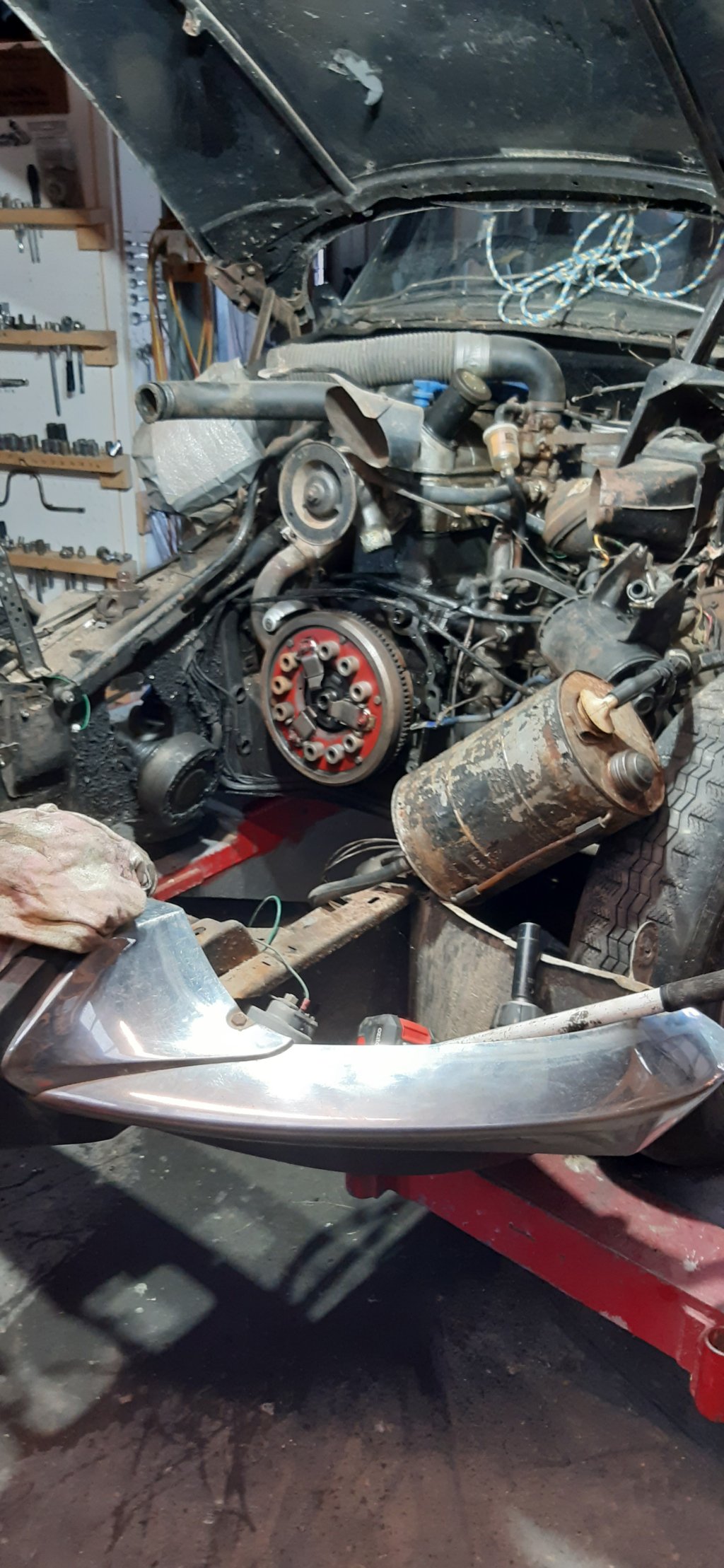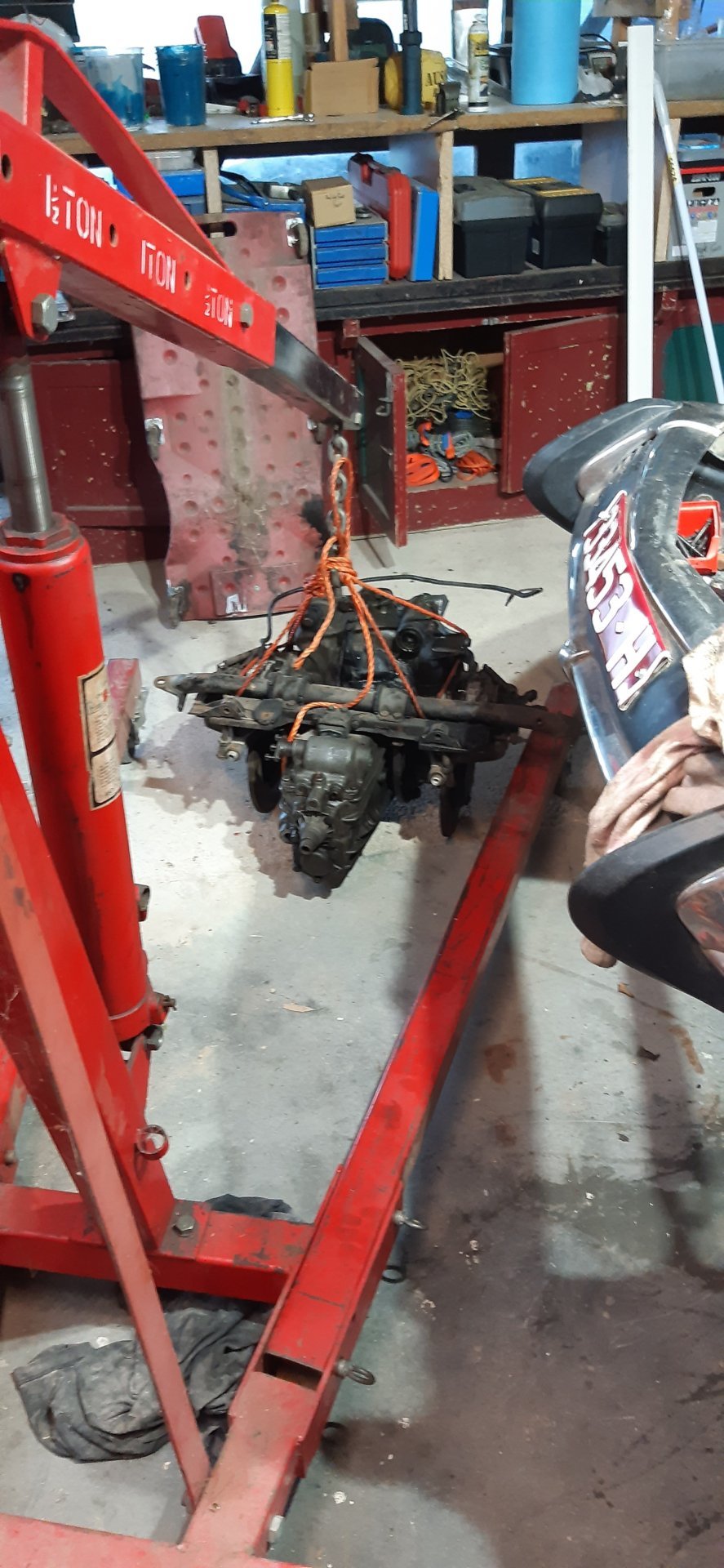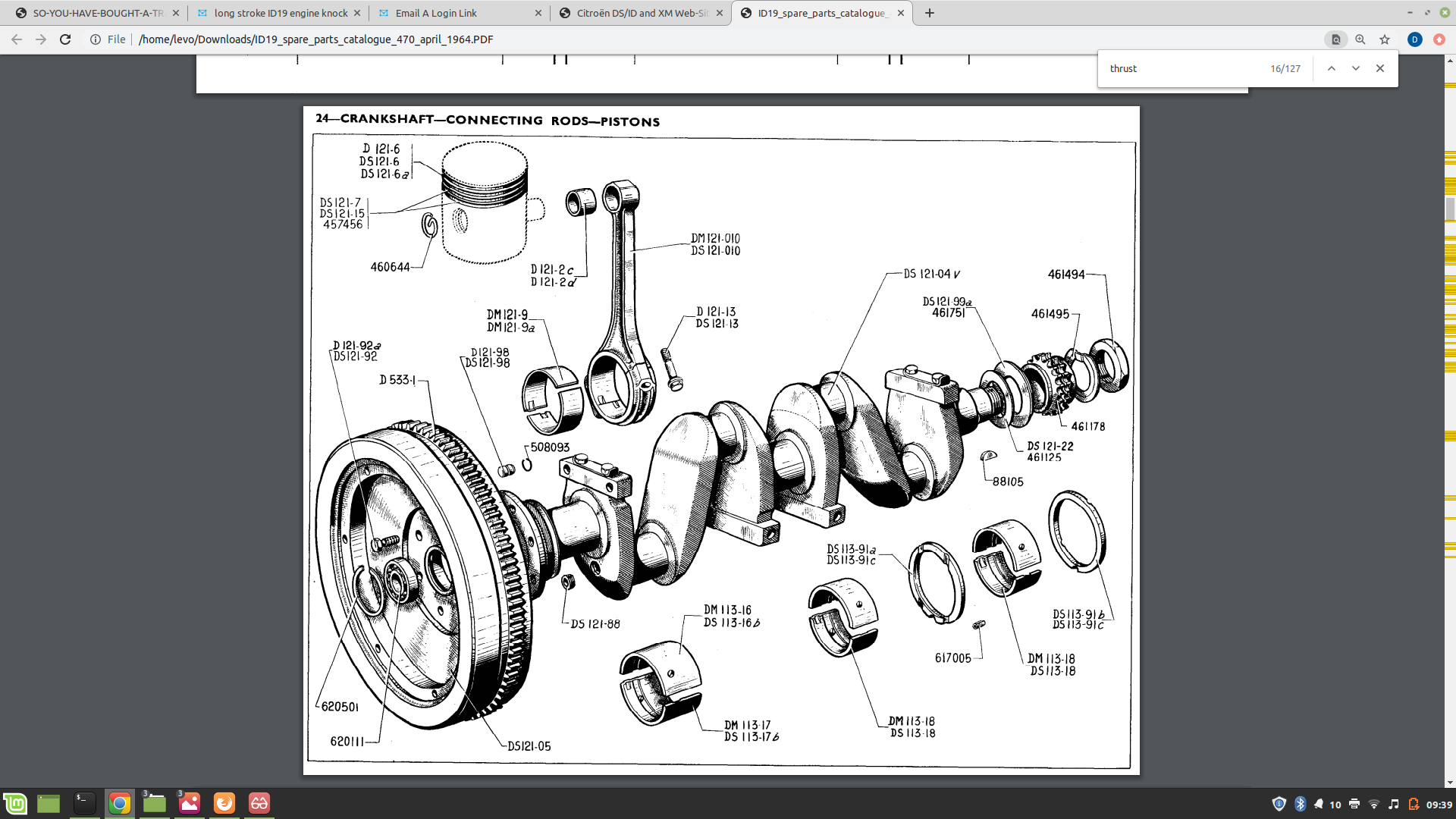
You are using an out of date browser. It may not display this or other websites correctly.
You should upgrade or use an alternative browser.
You should upgrade or use an alternative browser.
ID19 gearboxes
- Thread starter DoubleChevron
- Start date
Such chaotic design compared to the logical well set out 403.
Its very simple to work on .... its only 10minutes work to pull the front panels and have all the access there you can see! These are a million times easier to work on than modern crap. They were assembled by man ..... so can be dismantled by man

A Citroen having a clutch done is an impressive sight - so much stuff taking up two work bays all from one car and remarkably it all goes back together. French children who never tidied their rooms and left everything thrown around were made to work at Citroen while their neat and tidy brothers were rewarded with jobs at Peugeot.
Such chaotic design compared to the logical well set out 403.
And 10 times more technically advanced at the time it was built. :wink2:
These cars are so incredibly simple to work on .... EVERYONE needs to own an XM at one point in there life .... just so they have some perspective.... The old ID's must be the simplest car ever made 



The flywheel can be slide back/forth about 5mm ... so either the bolts are loose on the crank hub ... or the crank retainers is gone on the bottom end of the motor is toast. I'll pull the clutch plate off later and see.

I just used some "high quality" shit rope from bunnings that stretches forever and slung it to the crane like this.
seeya,
Shane L.


The flywheel can be slide back/forth about 5mm ... so either the bolts are loose on the crank hub ... or the crank retainers is gone on the bottom end of the motor is toast. I'll pull the clutch plate off later and see.
I just used some "high quality" shit rope from bunnings that stretches forever and slung it to the crane like this.
seeya,
Shane L.
well ... bugger it all. I better break out the exploded parts diagram so I can what controls crank float. I'm guessing the motor is probably toast.
There is a pack of shims behind the pulley they maybe are flogged out .
Idiot that assembled my 62. Left them out and wondered why the motor was locked
Idiot that assembled my 62. Left them out and wondered why the motor was locked
There is a pack of shims behind the pulley they maybe are flogged out .
Idiot that assembled my 62. Left them out and wondered why the motor was locked
I'm going to drag out the exploded diagrams (when I cna find them). I'm assuming any shims or locators are behind the timing chain or flywheel
I found the exploded parts diagram. DS 121-99a is the thrust washer ....

I'm not very smart ... but surely the only way that end float can suddenly appear is if the timing gear nut has come loose..... Maybe the motor isn't stuffed ... I'll see if I can get it out today.
... I'll see if I can get it out today.
seeya,
Shane L.
I'm not very smart ... but surely the only way that end float can suddenly appear is if the timing gear nut has come loose..... Maybe the motor isn't stuffed
seeya,
Shane L.
Attachments
Crankshaft sprocket nut (461494) has come loose. Rebuilder did not torque it to the proper 144 ft. lbs and/or did not properly peen the lock washer over the nut.
Crankshaft sprocket nut (461494) has come loose. Rebuilder did not torque it to the proper 144 ft. lbs and/or did not properly peen the lock washer over the nut.
Thanks, I'm guessing that is all it can be (other than a broken crankshaft). Ive been really slack and only spent about an hour out there today. Gee's these early cars are easy to work on. Even the exhaust, you just unscrew the readily accessible clamp and your done. I'd never have found this if I hadn't pulled the gearbox out first.
I'm guessing I better tear the lining off the firewall and see if there is any bolts in that engine mount
seeya,
Shane L.
These things are impressive even today. Most people have never seen a Bibax joint or been able to marvel at the practice of cushioning a driveshaft.... the sliding spline concept on the OUTside of the universal joint must be unique. I have written recently on AF about the disastrous Rover plan with fixed length driveshafts. A splined shaft typically Triumph 2000 causes considerable binding.
Back in the day the local agent had special long shafted spanners built ( about a metre long ) so the bolts around the bell housing could be accessed horizontally from about the nose of the gearbox and the engine left in place. Did you find any of the unique flat sided bolts ? . IIRC there were two. Probably replaced by conventional bolts by now.
Back in the day the local agent had special long shafted spanners built ( about a metre long ) so the bolts around the bell housing could be accessed horizontally from about the nose of the gearbox and the engine left in place. Did you find any of the unique flat sided bolts ? . IIRC there were two. Probably replaced by conventional bolts by now.
These things are impressive even today. Most people have never seen a Bibax joint or been able to marvel at the practice of cushioning a driveshaft.... the sliding spline concept on the OUTside of the universal joint must be unique. I have written recently on AF about the disastrous Rover plan with fixed length driveshafts. A splined shaft typically Triumph 2000 causes considerable binding.
Back in the day the local agent had special long shafted spanners built ( about a metre long ) so the bolts around the bell housing could be accessed horizontally from about the nose of the gearbox and the engine left in place. Did you find any of the unique flat sided bolts ? . IIRC there were two. Probably replaced by conventional bolts by now.
This one had an odd assortment of missing and loose bolts in the bell housing. I do have the bell housing bolt tool here, but didn't need it. They really are a fascinating car both in operation/driving and to work on. There will never be anything even remotely like a Citroen DS ever made again. After trying to work on modern crap, anything this old is a revelation to work on. If it was assembled by man ... generally it will easily be dissaembled by a mere mortal too
 Its such a relief not to be breaking fragile plastic shit everywhere!
Its such a relief not to be breaking fragile plastic shit everywhere!seeya,
Shane L.
Always wondered why one bolt on the bell housing needed special 'Citroen '(!) socket
I will be interested to see once you assess the damage. The crankshaft sprocket is keyed to the shaft by a fairly robust Woodruff key. Hopefully the keyway groove in the crankshaft was not damaged. Inspect carefully the thrust washers and their locating pin in the rear main bearing cap. If the bronze thrust washers themselves came away from the locating pin, the thrust washers and/or the locating pin may be damaged. Reproduction thrust washers are available. The locating pin is just a roll pin. Also, disassemble and inspect the aluminium housing for the oil slinger behind the flywheel. If it has been damaged, you will have an oil leak behind the flywheel (I suspect this will be damaged fairly extensively as it probably became the end-float limiter once the crank sproket came loose). Be sure to observe the proper centering technique (0.1mm shim stock spacer between the turbine and the oil slinger housing) if you disturb the original location.... If your crankshaft is broken I have a spare one you can have (early type without harmonic balancer) although shipping costs from the states is likely to be eye watering....
Re the special Citroen socket. My dad had a Caterpillar tractor tool that was a flat sided socket .. IIRC used as a bleed tool for brakes of more likely diesel lines.
Re BIBAX joints .. anybody ever had one apart? I did about 50 years ago and replaced one of the cushions.
Considering the fashionable late 50s early 60s British way to transmit power and allow for effective shaft length changes .. the RUBBER DONUT as used on Lotus, Hillman Imp and IIRC the inner joint on Minis. Landrover Discoveries still use a version of it on prop shafts.
Andre's men were worthy of considerable respect, even if they did create what was coined a "plumbers nightmare"at the time. Now a DS seems so eminently sensible and accessible and just about all possible with a selection of three or 4 socket/spanner sizes. 8,10,12 and 14 would get most of a DS in bits.
Re BIBAX joints .. anybody ever had one apart? I did about 50 years ago and replaced one of the cushions.
Considering the fashionable late 50s early 60s British way to transmit power and allow for effective shaft length changes .. the RUBBER DONUT as used on Lotus, Hillman Imp and IIRC the inner joint on Minis. Landrover Discoveries still use a version of it on prop shafts.
Andre's men were worthy of considerable respect, even if they did create what was coined a "plumbers nightmare"at the time. Now a DS seems so eminently sensible and accessible and just about all possible with a selection of three or 4 socket/spanner sizes. 8,10,12 and 14 would get most of a DS in bits.
well ... bugger it all. I better break out the exploded parts diagram so I can what controls crank float. I'm guessing the motor is probably toast.
Shane, is that not radial slack / movement? If it is, unless bigend bearings are shot, I just can not why / how you can have such radial movement.
John
I've never needed to put a DS motor .... well any motor onto an engine stand before. Is the block really strong enough to support the weight from four piddly little bolts through the bell housing area  .... it doesn't look strong enough to me!
.... it doesn't look strong enough to me!
seeya,
Shane L.
seeya,
Shane L.

